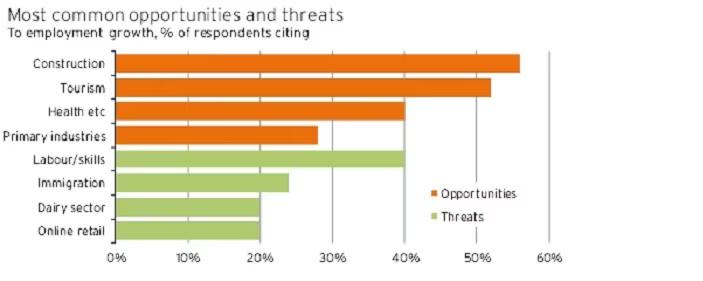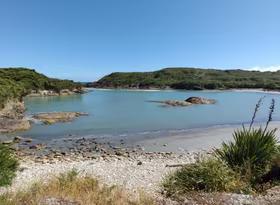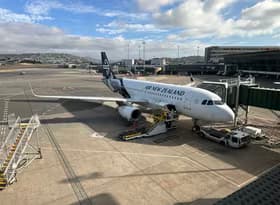Where can we find more skilled workers?
We have heard a lot recently about the struggles to meet labour demand in the regions . With a tight labour market and low unemployment rate, stories of employers being unable to find enough workers are becoming increasingly common.
This article looks at immigration, one of the key ‘cogs’ to helping address skills shortages. More specifically, we look at how the proposed ‘Regional Skills Shortage List’ could provide the necessary workers throughout the country.
In a recent survey of councils, Infometrics found that labour supply was one of the most common threats to regional growth potential. Continued regional growth is conditional on the right skilled labour being available for businesses.
With skilled labour in short supply, it is important that action is taken now to secure the necessary workers for businesses around New Zealand.

Source: Infometrics Regional Survey 2018
Migration is a useful way of generating labour supply for skills in immediate demand. Fortunately for the labour market, immigration to New Zealand has been booming in recent years – a result of robust growth. Immigration has also generated population growth and continued strong economic performance for New Zealand’s provincial areas.
However, net migration has peaked in recent months. To rub salt in the wound, the Government’s signalled closing of the gates on immigrants may see some economic growth drop away over the next couple of years. Economic outcomes in the regions will begin to stutter as the labour market tightens.
But in the long run, it is more sustainable to generate skilled labour supply ourselves domestically. It is important that the government’s immigration policy aligns with the education system. Unfortunately, we believe the new Fees Free policy is likely to create a larger mismatch of skills . An education system should be successful in creating the skills required by the market – a task that can be achieved through a national skills strategy, as outlined by Infometrics previously .
Despite recently strong migration levels, provincial New Zealand is still crying out for more skilled workers. With metropolitan areas soaking up the bulk of migrant workers, expected drops in immigration will further ramp up pressure on regional economies.
A Regional Skills Shortage List (an idea proposed by the Labour Party prior to elections) could begin to address the skills demand felt in the regions, whilst taking migrant pressure of the main metropolitan areas. As the government has not yet given concrete details on the Regional Skills Shortage List, Infometrics has thought of a few ideas.
The Regional Skills Shortage List should replace the current Immediate Skills Shortage List. It is intended that this new immigration list will replace all functions of the previous Immediate Skills Shortage List, while being more tailored for each region. Currently the Immediate Skills Shortage list has a regional element to it, however, it is lacking both specificity and depth. Through creating individual breakdowns for each region, the threshold for a skills shortage can be lower – allowing a more tailored fit.
Currently, it is difficult for a region with a specific skills shortage to be featured on the Immediate Skills Shortage List, unless this shortage was also in multiple other regions. By creating detailed regional lists, smaller and more specific shortages can be included. Consequently, we can expect migration to be more catered to each region’s individual demands.
Prioritised jobs and regions in relatively greater need of skilled workers could also mean the Regional Skills Shortage List allocates visa points in a more targeted manner. A differentiated points system would provide more points towards a fruit picker on the East Coast than a real estate agent in Auckland, incentivising skilled migrants to the regions.
This targeted list would redistribute immigration throughout the country, boosting provincial populations and sharing the spoils of immigration. Through allowing migrants to live only in their region designated by the Regional Skills Shortage List, we can expect the proportion of migrants settling in the main metropolitan areas to decline.
An issue with creating a Regional Skills Shortage List is that workers can be relatively mobile. It doesn’t make sense to advertise for a job shortage in Hamilton when there may be plenty of workers in Auckland for that exact job. It makes more sense to drive a New Zealander down from Auckland than to fly an immigrant from around the world.
This problem can be resolved by cross-checking the regional demand for jobs with supply in larger labour market areas. In doing so, we ensure as minimal displacement of New Zealand workers as possible, while still allowing for a detailed regional skills shortage list.
The question remains of how to create such a detailed shortage list – what skills and jobs are listed, and where for? Businesses are often not very good at estimating their own future employment needs. Without accurate forecasts of expected labour demand, the proposed Regional Skills Shortage List will fall short of completing its intended outcomes. Knowing where workers are needed, and what for, is the most important aspect of the proposed list – though perhaps the hardest to accurately perform.
A potential way for this to occur is for Government (through MBIE) to work closely with local economic development agencies (EDAs) and related industry organisations (such as local Chambers of Commerce) to define the List. The List must also be flexible enough for, or include mechanisms to allow for, skilled jobs to be added or subtracted as labour markets shift.
This identification of needs should also then be used as an input to a National Skills Strategy, so that over time the structural undersupply of skilled labour in regional areas is addressed. Labour supply issues cannot be solved solely by immigration or education: each have a part to play, but they are inextricably linked to the overall growth prospects of regional New Zealand.
A Regional Skills Shortage List will not be the panacea that some think it will be. The above approach however, does provide a framework to use immigration as a tool to help take stress off the labour market more effectively. While a Regional Skills Shortage List cannot fix all labour shortages, it is an improvement from the current Immediate Skills Shortage List by using a more tailored approach.
If you are interested in finding out more about labour demand in your area or industry, feel free to contact us at Infometrics. We are available to sit in on workshops or planning sessions to provide an expert view and sense test of numbers as discussions progress. We can also provide detailed sector profiles containing employment forecasts broken down by both area and industry.
















